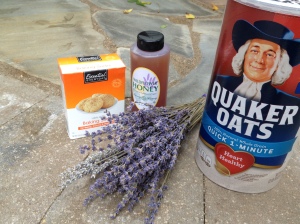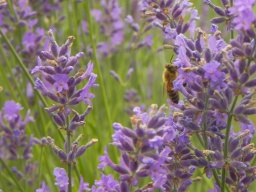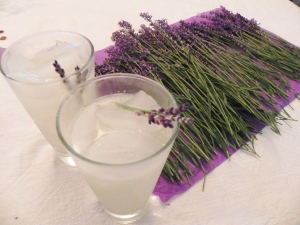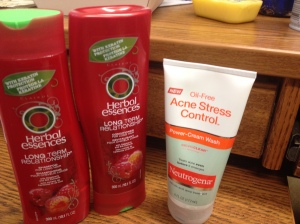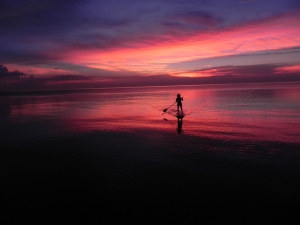I started this project with a lot of reservations. Most of what I think of when I think about living more sustainably involve going back to the basics of my childhood. Like buying actual plates instead of paper plates. Or using a shopping bag instead of a plastic bag. Or making food instead of buying it prepackaged. Basically, in my head, good is what I grew up with. Bad is all these pesky disposable things I’m dealing with now that I’m living on my own with not a lot of stuff.
However, in my life, the majority of my waste comes from bathroom products. Disposable razors, feminine products, paper towels, toilet paper, toothpaste tubes, ect. And the majority of the chemicals I bring myself into contact with come from cosmetics, hair care, soap, and bathroom cleaners. But these have been a part of my life for as long as I can remember. It was a very deep rooted habit to break myself of and begin to rethink. Was life without this possible? How awkward is it going to be to write about some of this?
You know what has bothered me for a long time? Alternatives to feminine products. That is a lot of gross, irredeemable trash produced. According to Lily Cup, the US creates 270,000 tons of waste from this alone. You know what I had never heard of? A menstrual cup. A reusable, clean version of a tampon. I know that was never presented to me as an option in any of those “Growing Body” conversations. You can check that out the latest version here.
Also disposable razors. There’s a ton of alternatives to this, and I am totally going to ask to for a safety razor for Christmas. My favorite alternative though is to just stop shaving and reject social norms. Can we please? But no. Even I am uncomfortable with the idea of just not shaving. Personally, I think the old fashioned straight razors are pretty cool, but my roommate and I both agree I would probably sever a major artery were I to try to shave my legs with one since I nick my legs with the baby plastic ones. These blades are a lot nicer and made to last.
Did you know there are bloggers making and sharing recipes for everything from foundation to lipstick to eyeliner. This website has recipes for just about every beauty product you could need. Basically, the moral of this whole project is if you’re looking to find an alternative to basically anything, someone has a recipe somewhere using all natural ingredients. Local is sometimes a little harder.
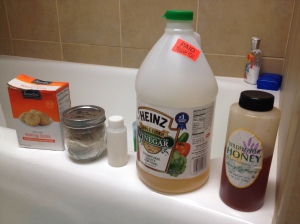
My shower shelf. (Not including my new bar of castile soap!)
These are just some of the alternatives I’ve discovered since beginning to question all of my toiletries not just my shampoo. Turns out living without putting chemicals in my hair or on my face is not really that hard. I took just an hour one weekend to gather supplies and put together my brand new hair and skin care product line, and I still have plenty! The final lineup: baking soda for shampoo, the occasional apple cider vinegar conditioner treatment, honey and lavender and oats facewash, and a bar of beeswax that makes amazing lotion and makes me smell like honey.
This is what my journey has resulted in:
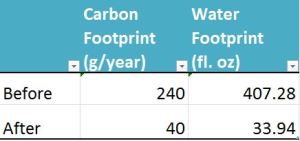
I have also eliminated the carcinogens in my shampoo and conditioner from my routine (Do you think a hazardous waste facility will take my half full shampoo bottles?) as well as the microbeads present in my facewash. I also just this past week got rid of the animal products I have been using and started using castile soap. I’m kind of disgusted with myself that it took so long to switch. Added bonus: I actually know what all ingredients listed on the soap are! As far as the other chemicals go, I don’t know in what quantities they become toxic, but I am no longer putting those down my drain now that I have an alternative I know is not toxic in any quantity.
While the biggest carbon impact of showers comes from heating the water needed, ensuring that our wastewater is not full of chemicals interacting in our environment is vitally important. The cocktail of chemicals we put out may not only cause toxicity on its own but interact in the environment in unexpected ways. A study done in South Wales tested the wastewater discharge of two treatments plants and found high concentrations of chemicals in pharmaceuticals and personal care products corresponding to consumption patterns.
It’s all very well and good for us as consumers to be attempting to buy smarter, but how about we get some smarter products? Where’s the corporate responsibility in this? This goes back to one of my favorite books, The Story of Stuff by Annie Leonard and a recent lecture in Global Green Politics. We don’t have a good, readily available option for all of this stuff. Buying online or making our own isn’t that hard, but why are corporations designing products that are wasteful and harmful instead of products that add value for the user and can be taken back and remade into themselves or a product of greater value. William McDonough talks about the new design specs we need to adopt to truly create a green industrial revolution and this means no toxics, no dangerous products, and no valuable materials dumped in holes.
There is a nation adopting this corporate responsibility and redesign model, and it’s Germany! This is hardly a surprise after hearing about the way they have embraced sustainability. In 1996, Germany enacted the Act for Promoting Closed Substance Cycle Waste Management and Ensuring Environmentally Compatible Waste Disposal. We’re just going to call it the Closed Cycle Act. This act contains the revolutionary idea that your mom always told you, you are responsible for your own mess. This Act puts the blame for reclamation, recycling, and safe disposal of the products squarely on the producers creating a huge incentive for them to make their products last longer, come apart for reuse easier, and recycle better. Their goal is to completely eliminate landfills by 2020! Right now, 14% of the raw materials for production in Germany are recovered from waste. Recovering Raw Earth Elements from household waste is known as urban mining. You can read more about that here.
The US almost had Germany beat on getting such a system implemented though how well it would have worked is unknown, since it died in Congress. In 1989, a bill called the Waste Reduction Act attempted to eliminate pollution and waste at the source. The US as a nation currently prescribes to the idea that once a product is bought by a consumer, the disposal of that product is on the heads of the consumer, and with products that are fit for nothing but a landfill at the end of their lives, what else are we to do, but throw them in the trash?
The USA as well as Canada and many other countries choose to deal with waste and pollution that looks like pollution is supposed to look: smokestacks, pipes draining sludge into rivers, toxic waste dumps, and the like. As consumers, we don’t imagine the neatly packaged, shiny, green leafed product might be toxic to us and the environment as well. A change in this perception is necessary in order to make government and companies know that we demand a better product: one that will last, one that will be safe, and one that will not come back as waste but as a brand new product.
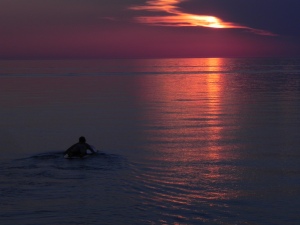
Is it cheesy to say I am paddling off into a clean water future?




